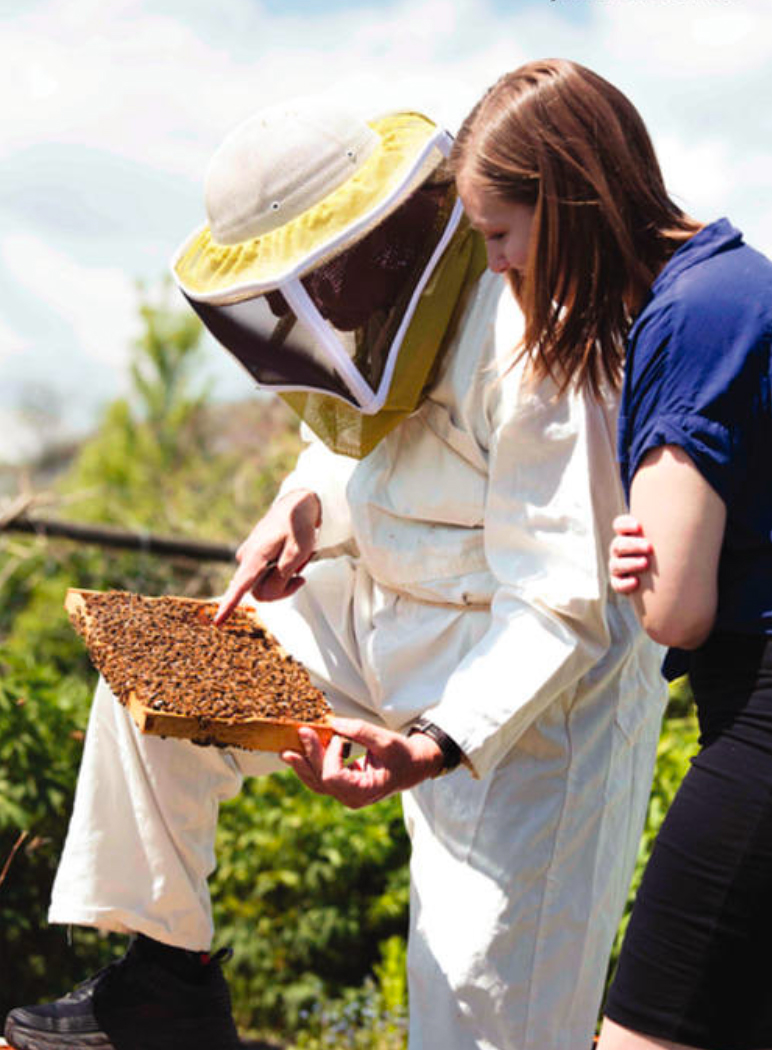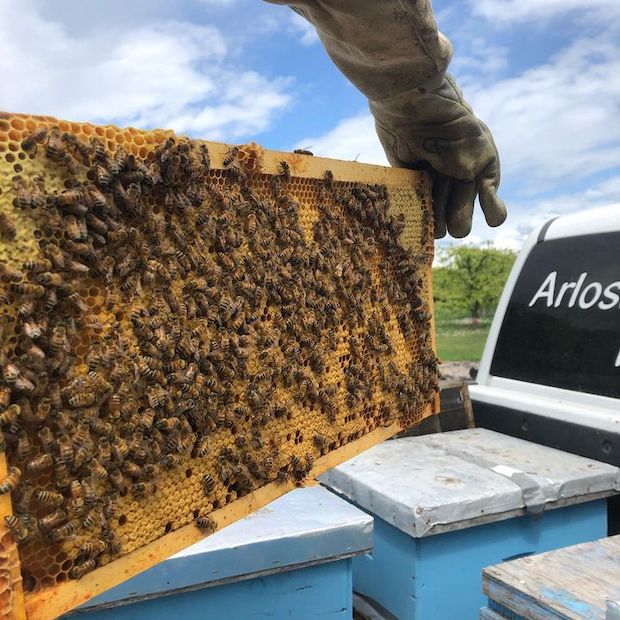“I can relax, eat my lunch and play tunes surrounded by honey bees,” says Ed Nowek, Planet Bee founder. “I compare them to a horse or a dog—they can sense your comfort level and smell fear. They don’t want to sting (a honey bee dies when she stings), they want flowers.” And the team work their little hearts out to make honey.

Ed Nowek’s infatuation with honey bees started in 1969 during a high school summer job in northern Alberta. “After two weeks of hard work I started to appreciate what they can do. Then I discovered how much honey a bee colony can produce in just a few months (over 90 kilograms),” says Nowek. “I worked on honey farms in warmer climates and was amazed at how adaptable bees are and how they provide commercial opportunities worldwide. But the best honey in the world comes from Canada.”

About 50 kilometres down Highway 97 to Kelowna, Arlo’s Honey Farm features ”Bee Educated,” like an outdoor bee museum complete with production hives and guided tours to learn the life cycle of these pollinators. While Sandy St. Laurent focuses on the store, daughter Lisa is the beekeeper, the “bees knees.” She has a demanding career in tech but mornings and evenings Sandy works with the hives and slows down. “The bees make you calm. The collective hive fascinates and teaches so much, like how to care for each other,” Sandy says.
If You Go
Both Planet Bee and Arlo’s Honey Farm offer customized tours—think social distancing. Big gatherings aren’t encouraged. And the store might have a lineup but it’s worth the wait. Buying local raw honey creates a ripple effect by supporting a thriving bee ecology that means more food can be grown locally. And there are health benefits. Because raw honey is not pasteurized (versus liquid honey that looks pretty but is heated and rendered into a sugar), it contains antioxidants and traces of bee pollen that helps with allergies—honey bees have their own pharmacy.
How Can We Help Bee Conservation?
Change our gardening habits: avoid poisonous sprays and limit pesticides and plant for a wider array and a longer season. Provide a natural nesting habitat by setting aside about 100 square feet in the corner of your yard and let the leaves pile up. Buy organic and ask at the grocery store or market what sprays they use.




